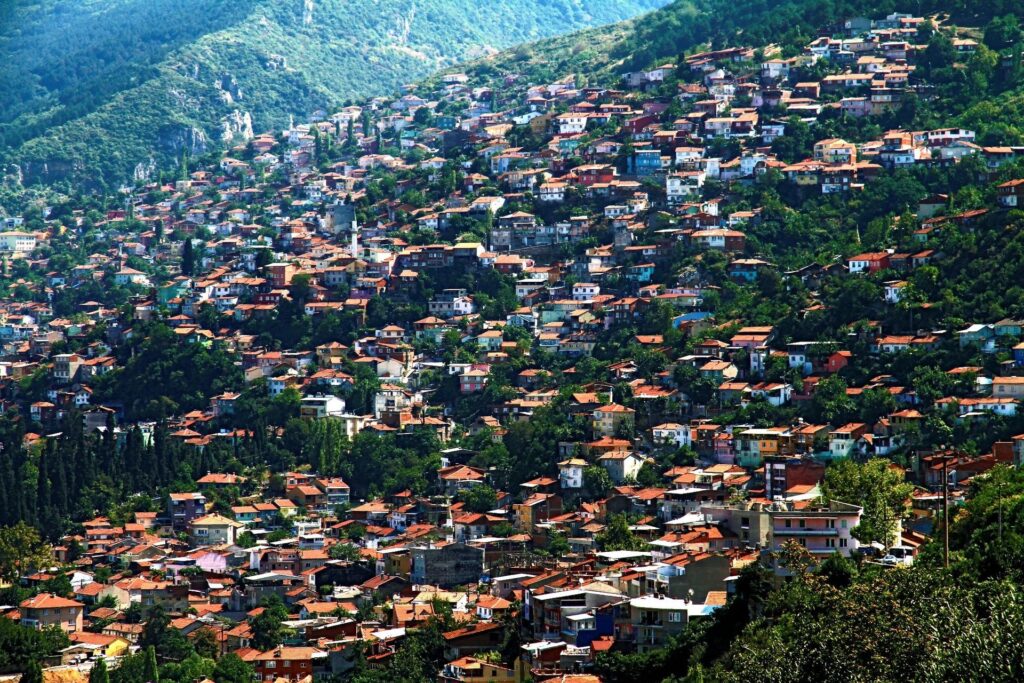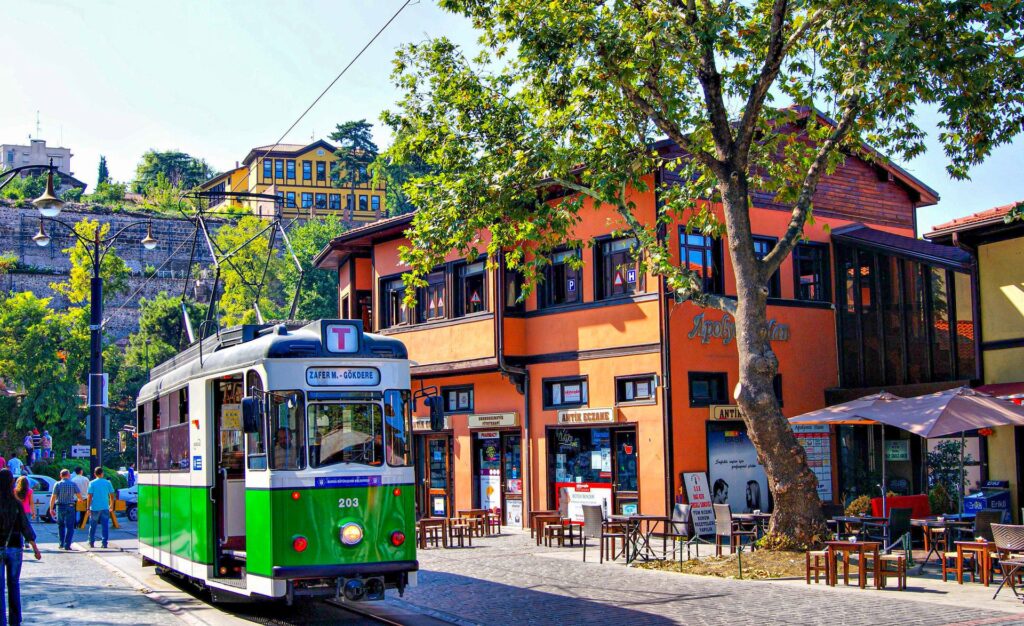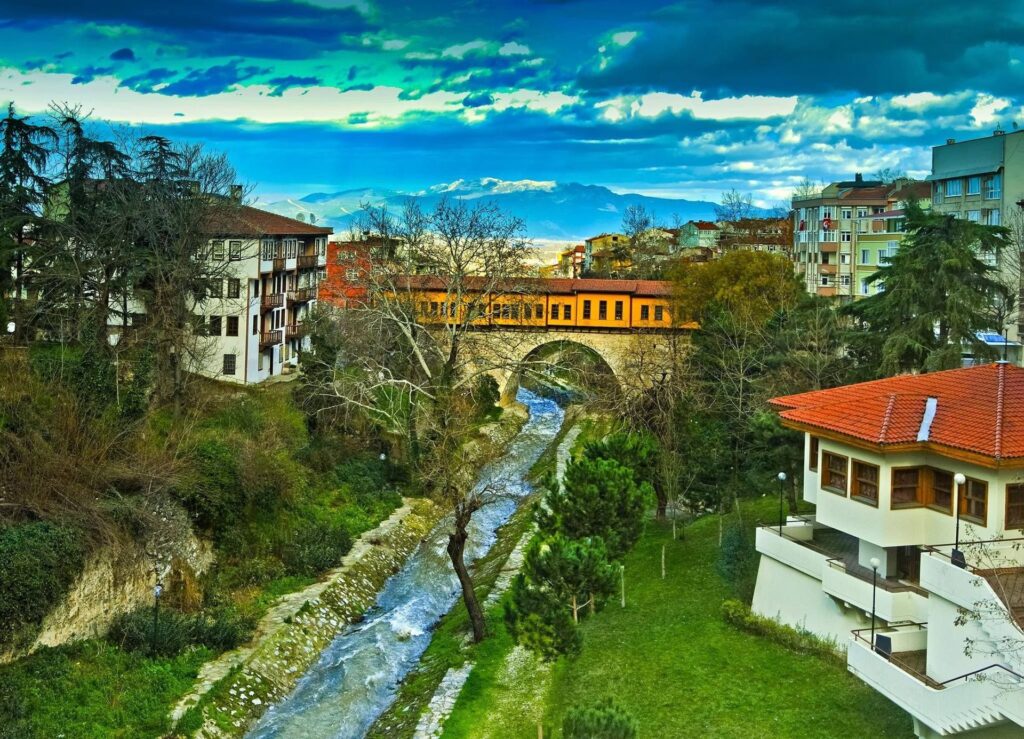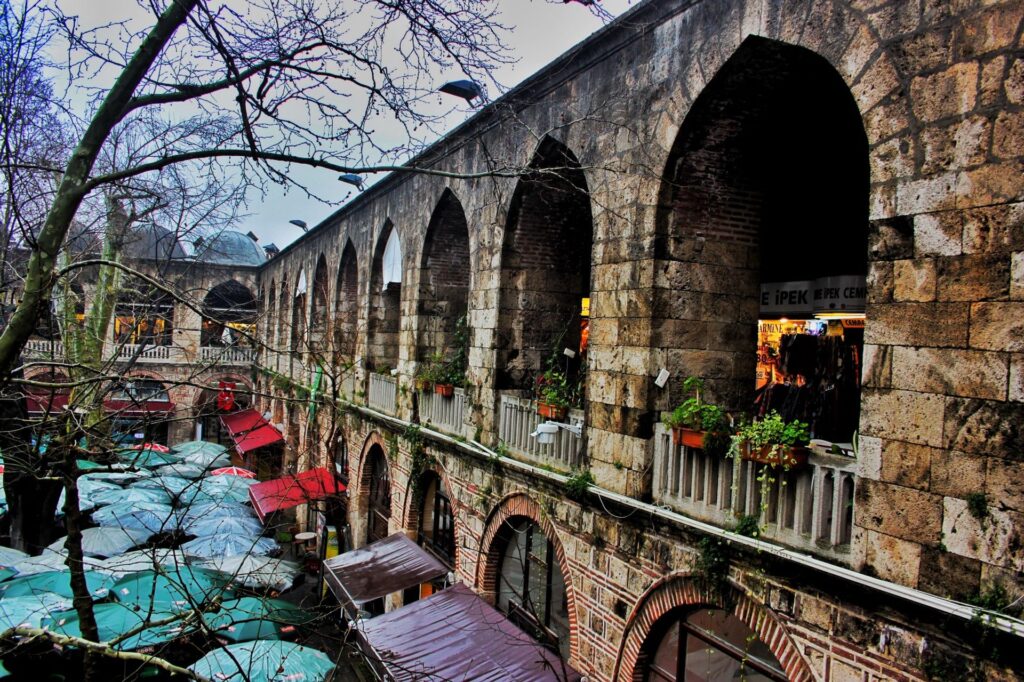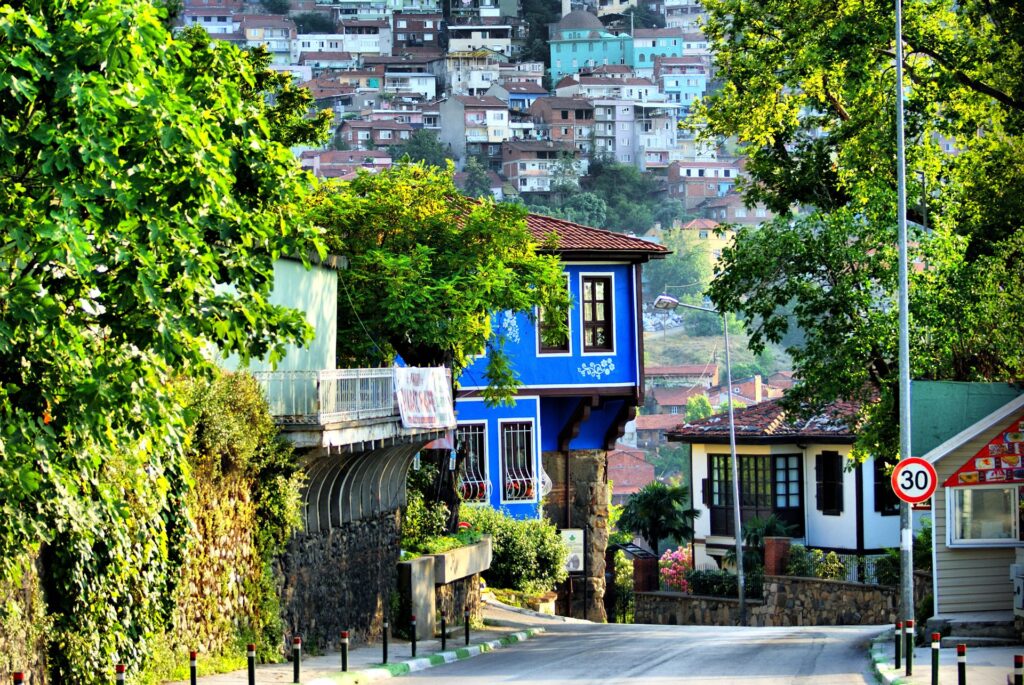Just sit for a moment and think about all the beautiful things once you’ve seen and adored. Nature, history, fun, art… It is possible to experience all this in one place; Bursa.
As they say “Beauty is in the details” … Bursa is one of the most beautiful details of Türkiye. Bursa, the heart of winter sports, also appeals to everyone’s tastes with its historical baths, excellent views and cultural delicacies.
Let loose yourself in the details of historical events and experience, taste the unique dishes and have yourself a feast, rediscover the joy of winter sports with friends and family and the most important of it all, meet the sincere people of Bursa and become a part of it.
Bursa was the third capital city of the Ottoman empire, and one of the greatest treasure houses of Islamic architecture; the Green Mosque and Green Mausoleum, both world-renowned for their superb tile decorations, as well as the late 14th-century Great Mosque and the Koza Han. Koza Han was the center of Bursa’s flourishing silk trade for centuries, and also is the leader of Turkey’s silk production and import. Bursa was also home to the skilled artisans who produced kaftans, pillows, embroidery and other silk products for the Ottoman palaces until the 17th century.
Ulu Mosque
Bursa Ulu Mosque was built on a large area during the time of Yıldırım Bayezid. It is the first of the multi-domed monumental structures among Ottoman mosques. Ulu Mosque has 20 domes sitting on twelve large square pillars. The construction had started after Yıldırım Bayezid’s 1396 Niğbolu victory. There are 192 works in the form of 87 plates written on the wall by 41 different calligraphers in the mosque with 13 different characters. In addition, there are antique clocks, candlesticks and the Qur’ans. The Ulu Mosque is one of the largest in Türkiye.
Green Mosque
The mosque was built in 1419 by Çelebi Sultan Mehmed. Green Mosque, which is one of the “Inverted T” plan mosques, is one of the most beautiful historical buildings of Türkiye.
The crown door at the entrance of Green Mosque, is a beautiful product of Turkish stone carving. The mukarnas is extraordinarily beautiful. Green stone and marble were used in the door arch. Most of the interior is covered with tiles. The walls, ceilings, vaults and transition iwans are all covered with tiles. One of the most precious examples of tile work in the mosque is its mihrab, which is more than ten meters high. The mihrab, which includes flowers with various geometric motifs, is one of the most beautiful details in the mosque.
Turkish & Islamic Arts Museum
Green Madrasa, one of the first Ottoman madrasas, is also known as Sultaniye Madrasa, hosts tile and ceramic works from the Seljuk, Beylik and Ottoman periods (İznik, Kütahya) dating from the 13th to the 20th centuries, wood, carved and inlaid works, examples of Turkish metal art, tombak and other metal works, Seljuk and Ottoman coins, traditional Turkish handicrafts and clothes.
Soğanlı Botanical Park
Soğanlı Botanical Park covers an area of 400 acres and is open to herbal research and scientific studies. There are 150 species of trees, 27 types of roses, 76 types of shrubs, 20 types of cover plants in the park, which includes sections such as the Japanese Garden, the French Garden, the English Garden, the rose garden, the rock garden, the scented plants garden, the shaped plants garden. Again, within the park, there is a section where 17-19th century Bursa mansions serving as a hotel and restaurant are modeled.
İznik
İznik (ancient Nicaea) is a beautiful town on the lakeside offering rich natural and historical attractions. At one time it was considered as a holy city throughout Christendom compared only with Jerusalem and the Vatican City due to the fact that it was here in Nicaea, the famous “Nicene Creed” was issued. The 1st and 7th Ecumenical Councils dated to 325 and 787 were held in İznik/Nicaea. İznik is one of the 8 pilgrimage centers in Türkiye.
In İznik, you can visit Hagia Sophia and the Roman Theatre and visit some ceramic workshops to learn the secrets of the famous İznık tiles. İznik is in the UNESCO World Heritage Tentative List.
Gölyazı Village
Gölyazı Village is a unique beauty where nature and history come together on the shores of Lake Uluabat. Known as Apolyont in ancient times, this lovely village is where examples of traditional residential architecture can be seen.
Byzantine and Ottoman styles are intertwined. Trees that are submerged due to rising waters in spring, ducks soaring in these waters, pelicans, storks that nest on the roofs every spring, narrow and clean streets with cobblestone and friendly hospitable villagers; is just a few of the beauties. Ulubat Lake, which has gained the status of an important bird sanctuary, is an important breeding area for birds like pygmy cormorants, pied heron and spoonbill.
DON’T LEAVE BEFORE YOU EAT!
İskender Kebap
Iskender Efendi, in 1867; In his shop in Bursa, stacked the meat (lamb) on a skewer placed horizontally on the charcoal and served the meat on pide bread with tomato sauce and yoghurt on the side. That’s how Iskender Kebap was born.
Candied Chestnut
Candied Chestnut made from chestnuts harvested from Uludağ, is one of Bursa‘s trademark products. Shelled chestnuts are wrapped in thin cheesecloths and placed in the pot to boil, then sweet syrup is added.
Pideli Köfte
Pideli Köfte (the meatballs with pide), which emerged as an alternative to doner in the historical Kayhan Bazaar, are made only in Bursa with a history of hundreds of years.
